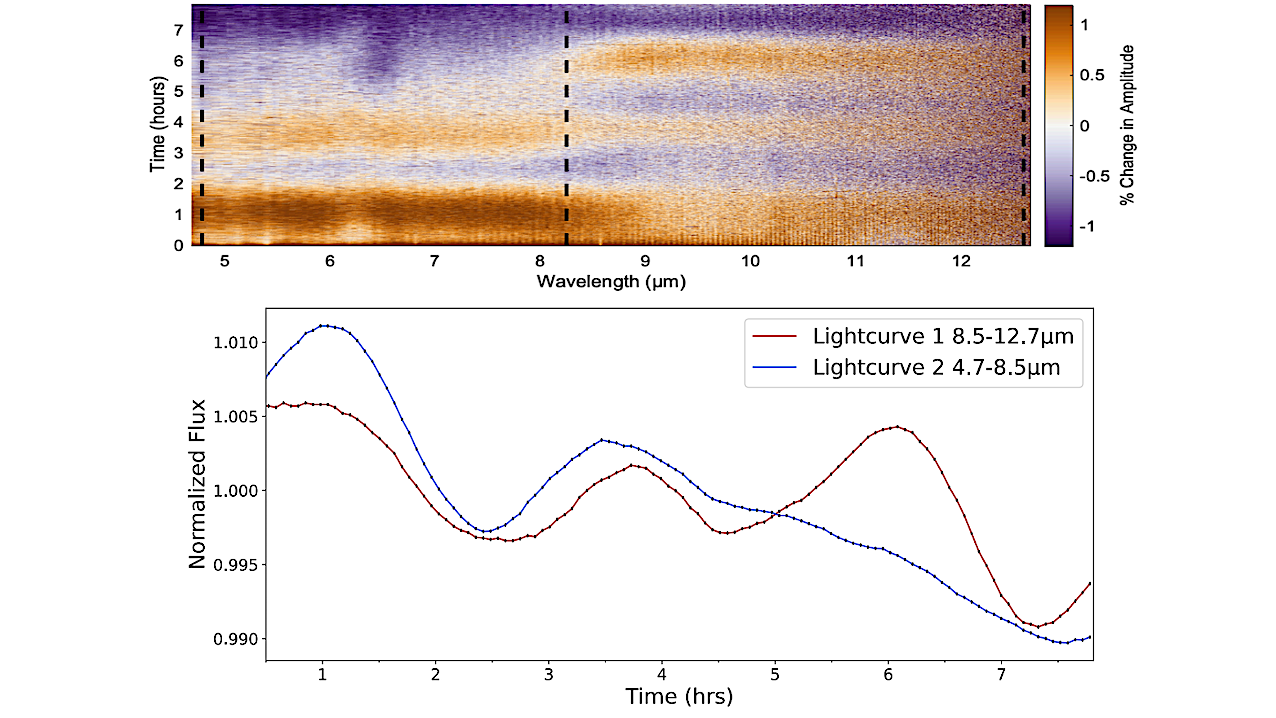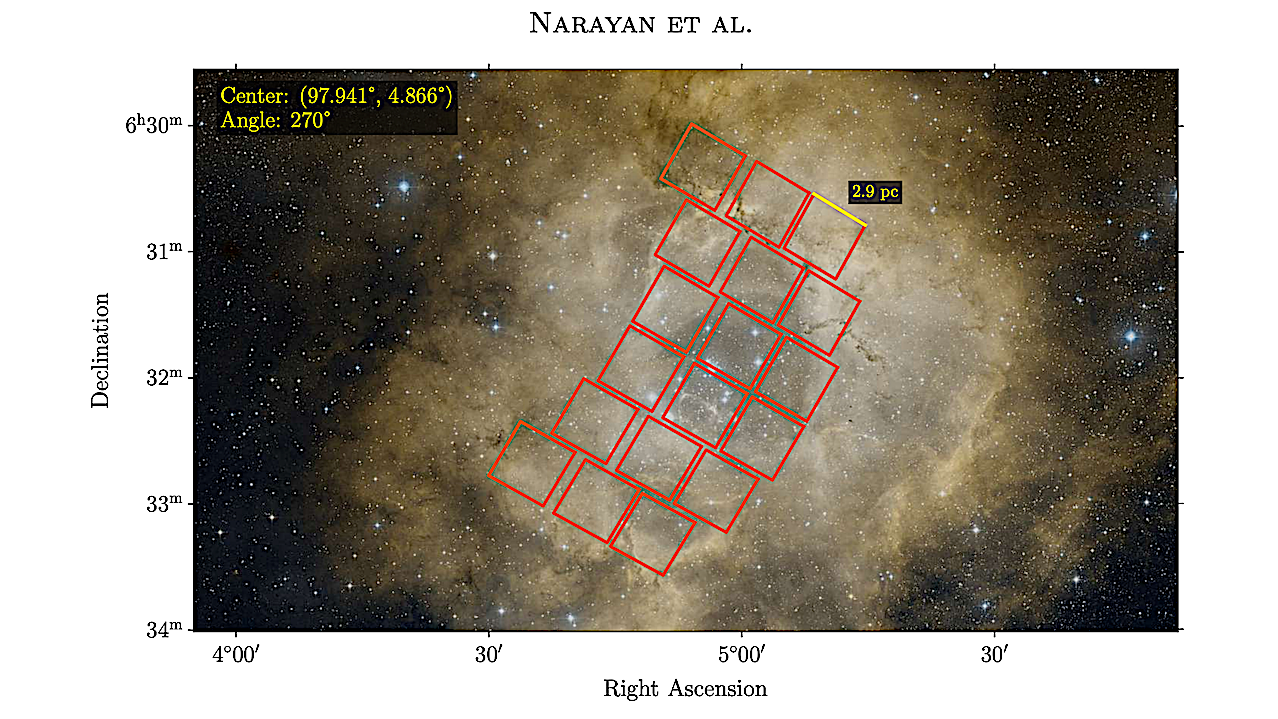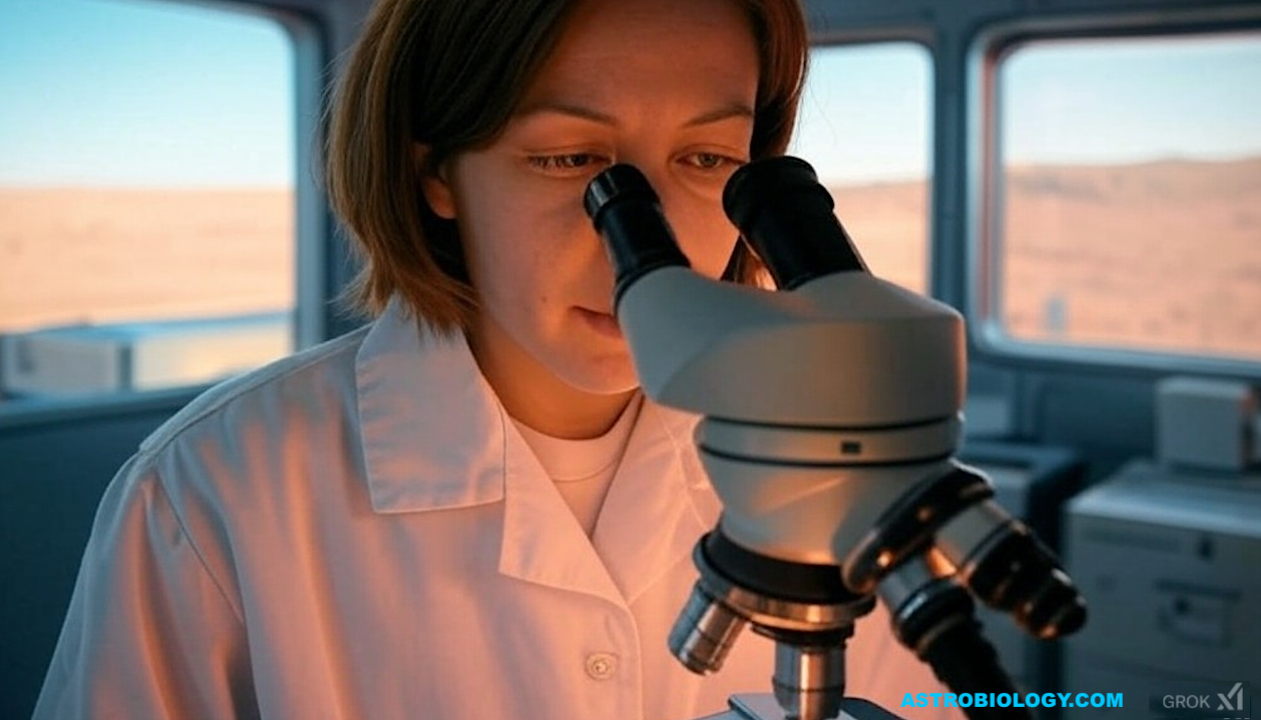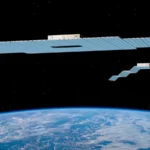Now Reading: Sensitivity to Sub-Io-sized Exosatellite Transits In The MIRI LRS Lightcurve Of The Nearest Substellar Worlds
-
01
Sensitivity to Sub-Io-sized Exosatellite Transits In The MIRI LRS Lightcurve Of The Nearest Substellar Worlds
Sensitivity to Sub-Io-sized Exosatellite Transits In The MIRI LRS Lightcurve Of The Nearest Substellar Worlds


Top: Blended MIRI LRS variability map of WISE J1049 AB: wavelength (x-axis) vs. time (y-axis) and normalized flux (amplitude; colorbar). There are two distinct lightcurve behaviors present, allowing for the construction of two unique lightcurves distinguished by the change in behavior at 8.5 µm (center dashed line). Bottom: Lightcurves 1 (red) and 2 (blue) constructed from the above data and outlined with an ∼ 11.77 min running median. — astro-ph.EP
JWST’s unprecedented sensitivity enables precise spectrophotometric monitoring of substellar worlds, revealing atmospheric variability driven by mechanisms operating across different pressure levels.
This same precision now permits exceptionally sensitive searches for transiting exosatellites, small terrestrial companions to these worlds. Using a novel simultaneous dual-band search method to address host variability, we present a search for transiting exosatellites in an 8-hour JWST/MIRI LRS lightcurve of the nearby (2.0pc) substellar binary WISE J1049-5319AB, composed of two ∼30MJup brown dwarfs separated by 3.5au and viewed near edge-on.
Although we detect no statistically significant transits, our injection-recovery tests demonstrate sensitivity to satellites as small as 0.275R⊕ (0.96RIo or ∼1 lunar radius), corresponding to 300ppm transit depths, and satellite-to-host mass ratios >10−6. This approach paves the way for detecting Galilean-moon analogs around directly imaged brown dwarfs, free-floating planets, and wide-orbit exoplanets, dozens of which are already scheduled for JWST lightcurve monitoring.
In our Solar System, each giant planet hosts on average 3.5 moons above this threshold, suggesting that JWST now probes a regime where such companions are expected to be abundant. The technique and sensitivities demonstrated here mark a critical step toward detecting exosatellites and ultimately enabling constraints on the occurrence rates of small terrestrial worlds orbiting 1-70MJup hosts.
Andrew Householder, Mary Anne Limbach, Beth Biller, Brooke Kotten, Mikayla J. Wilson, Johanna M. Vos, Andrew Skemer, Andrew Vanderburg, Ben J. Sutlieff, Xueqing Chen, Ian J. M. Crossfield, Nicolas Crouzet, Trent Dupuy, Jacqueline Faherty, Pengyu Liu, Elena Manjavacas, Allison McCarthy, Caroline V. Morley, Philip S. Muirhead, Natalia Oliveros-Gomez, Genaro Suárez, Xianyu Tan, Yifan Zhou
Comments: Published in ApJ Letters
Subjects: Earth and Planetary Astrophysics (astro-ph.EP); Instrumentation and Methods for Astrophysics (astro-ph.IM); Solar and Stellar Astrophysics (astro-ph.SR)
Cite as: arXiv:2510.23709 [astro-ph.EP] (or arXiv:2510.23709v1 [astro-ph.EP] for this version)
https://doi.org/10.48550/arXiv.2510.23709
Focus to learn more
Related DOI:
https://doi.org/10.3847/2041-8213/ae09ab
Focus to learn more
Submission history
From: Mary Anne Limbach
[v1] Mon, 27 Oct 2025 18:00:02 UTC (2,055 KB)
https://arxiv.org/abs/2510.23709
Astrobiology,
Stay Informed With the Latest & Most Important News
Previous Post
Next Post
-
 012024 in Review: Highlights from NASA in Silicon Valley
012024 in Review: Highlights from NASA in Silicon Valley -
 02Panasonic Leica Summilux DG 15mm f/1.7 ASPH review
02Panasonic Leica Summilux DG 15mm f/1.7 ASPH review -
 03How New NASA, India Earth Satellite NISAR Will See Earth
03How New NASA, India Earth Satellite NISAR Will See Earth -
 04And Thus Begins A New Year For Life On Earth
04And Thus Begins A New Year For Life On Earth -
 05Astronomy Activation Ambassadors: A New Era
05Astronomy Activation Ambassadors: A New Era -
06SpaceX launch surge helps set new global launch record in 2024
-
 07Space Force plans new ‘Futures Command’ amid pressure to speed up modernization
07Space Force plans new ‘Futures Command’ amid pressure to speed up modernization




















